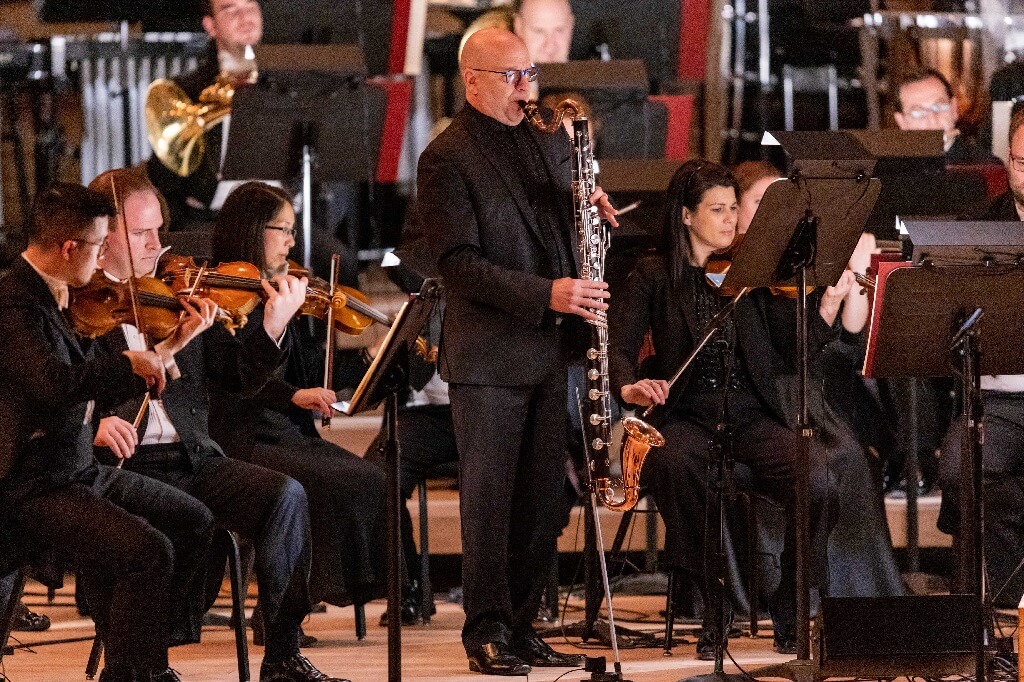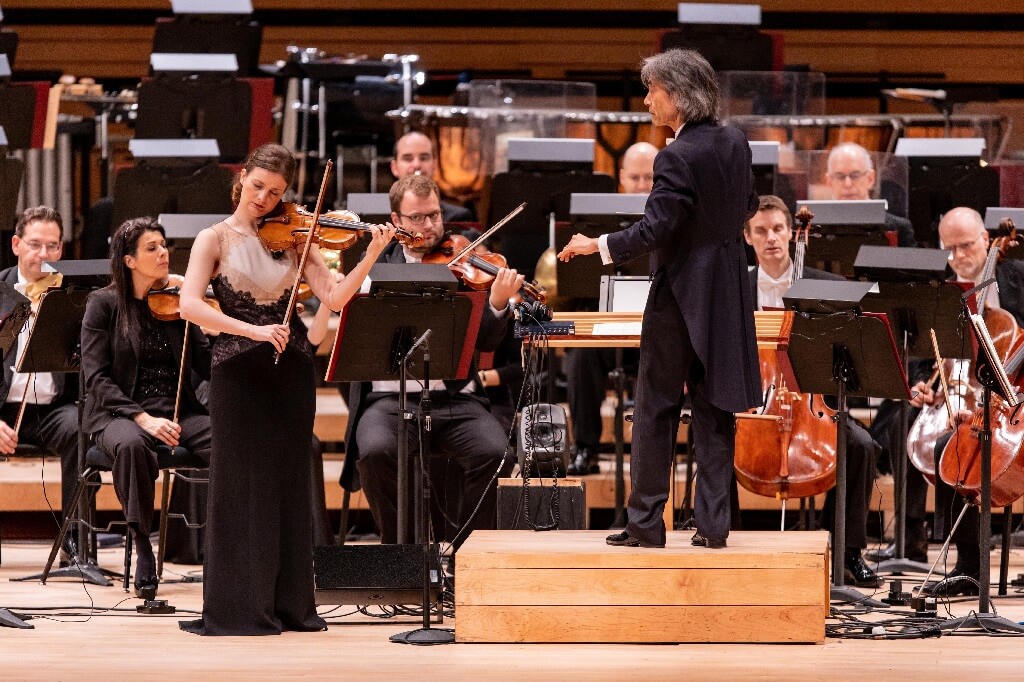
Take it or leave it: these are the possible ways of reacting to the philosophy behind the “Brahms and the Art of Film” (Le 7e Art et Brahms) series presented in the Maison symphonique by the OSM under Kent Nagano. The late maturity of Brahms, we are told, intersected in Europe with the development of cinema. Take it or leave it. Either way, the first of four concerts, on Thursday, offered performances worth hearing.
The world premiere was of Sur les ailes du pas de deux, a concerto for bass clarinet by the South Shore composer Blair Thomson. This evocative fantasy of 14 minutes, rich in notes, could be classed as musical pointillism, maybe magic realism. The effect resides not so much in the character of themes (sometimes simply scalar) as the constant, ebullient transformation they undergo.
The bass clarinet is usually thought of as a suggestive rather than assertive instrument, but through a variety of effects (including multiphonics within the first minute) and full exploration of its range, the soloist was made first among equals. Much credit is owing OSM veteran André Moisan, who played with the kind of intricate mastery that distinguishes itself even amid a rich texture.
Strong enough to stand on its own, the score was linked to Pas de Deux (1968), a freeform black-and-white film by Norman McLaren that transforms two dancers into fanlike multiples of themselves. Thomson nicely represented the “deux” part of the concept with duelling glissandi and otherwise reflected the imagery successfully (rather than literally). The crowd cheered for the package. I was impressed by the music, delivered with admirable finesse by the orchestra under Nagano.

This was the only cinematic aspect of the evening. The concert began with Mozart’s Violin Concerto No. 5. Veronika Eberle, a 30-year-old German, applied a bright tone and simple style to the first two movements and summoned some stronger sounds in the “Turkish” episodes of the finale.
The big-ticket item was Brahms’s First Symphony, led by Nagano with his usual assortment of subtle gestures and rapier thrusts but with interpretive intent that suggested the outlook of 50 years ago or more. The introduction was perhaps too broad and heavy. High energy in the Allegro made amends.
There were old-fashioned slowdowns at transitional passages; phrasing in the Andante sostenuto was as fluidly legato as could be. No blindfolded listener would suppose the conductor to be a modernist with a taste for historical practice.
Happily, the beginning of the third movement (wonderful principal clarinet) was not too thick. Horns and flute vividly captured the Alpine imagery of the introduction to the finale. We could not have asked for a warmer hymn theme, but as in the first movement, there was plenty of excitement to follow.
Sonority was frequently enriched by the famous octobass, which towered above the five double basses stage left, but made its presence felt beneath them. In the past I have given this rare instrument credit only for its visual impact. I certainly heard it on this occasion, from the centre of the parterre. At times the impression was of an organ part that Brahms never wrote.
I am told that no octobass support was planned on Friday night for the Second Symphony, this being a lighter sort of work. Probably a good call.
For information on the remaining Brahms/film concerts, go to osm.ca.
ALSO READ:
- SCRUTINY | Azrieli gala a popular success - 22 octobre 2022
- COMMENTARY | Why Playing Political Hot Potato With Artists Is A Terrible Idea - 23 mars 2022
- REVIEW |Tenor Spyres flies high at Lanaudière despite the downpour - 14 juillet 2019



